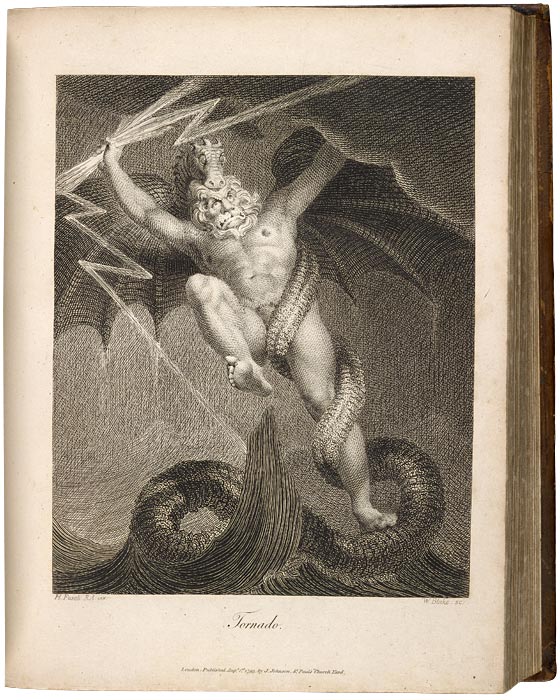
This example of Blake's commercial work is an engraving after Fuseli. It documents the skills Blake attained during his apprenticeship to Basire, which were amplified by his own maturity. Tornado appeared for the first time in this third edition. Two of Blake's engravings in this book are after Fuseli. The 1791 edition also contains Blake's four unsigned engravings of the Roman cameo-glass vase then belonging to the Duke of Portland. Darwin's poetical natural history and mythology influenced Blake's thought, as it had that of other Romantic poets.
Erasmus Darwin (1731-1802), The Botanic Garden: A Poem, in Two Parts . . . with Philosophical Notes, London, Third edition, PML 128113
